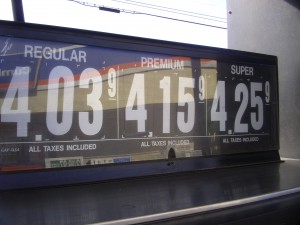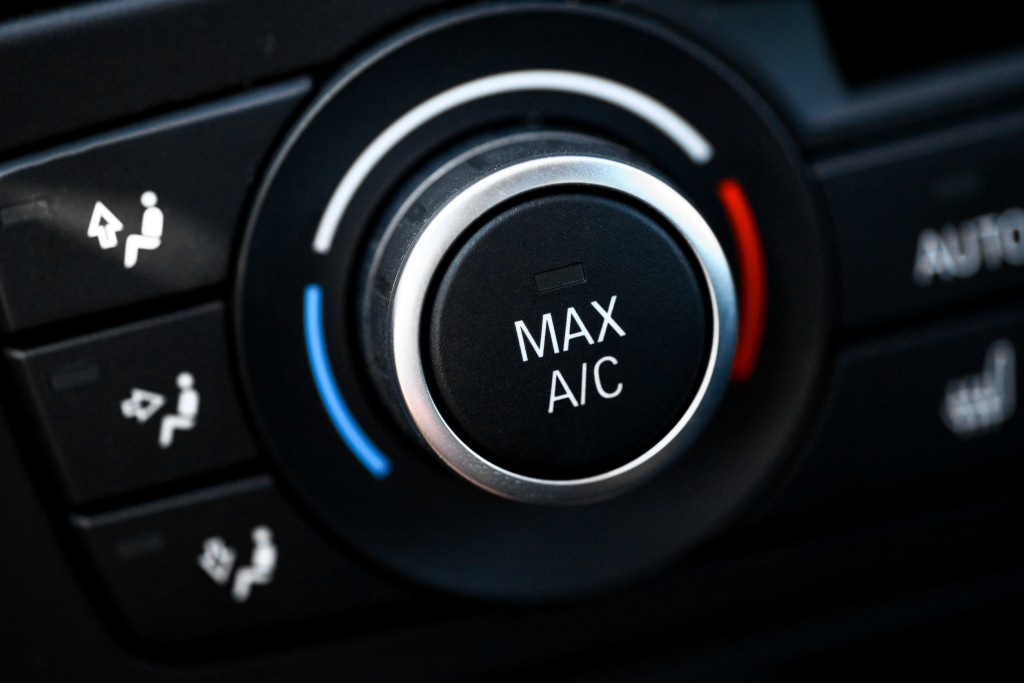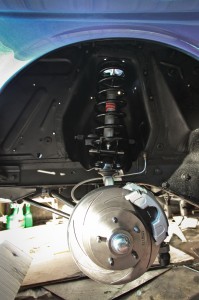5 Ways to Increase Gas Mileage
 With gas prices on the rise, motorists are once again looking for ways to stretch their dollars and increase their gas mileage. To aid in their search, we compiled a list of five ways you can increase your car’s gas mileage.
With gas prices on the rise, motorists are once again looking for ways to stretch their dollars and increase their gas mileage. To aid in their search, we compiled a list of five ways you can increase your car’s gas mileage.
Drive the speed limit – Although you may not get to your destination as fast as you would if you put the pedal to the metal, driving at appropriate speeds will increase your gas mileage. Traveling at 55 mph can increase your gas mileage by up to 21% compared to driving at 65 or 70 mph. Also, traffic lights are designed to keep traffic flowing. Peeling out after a light turns green may be fun, but chances are you’ll have to hit the breaks at the next light. Normal acceleration, combined with obeying the speed limit, will give you the best chance to hit a bunch of green lights in a row.
Know when to buy – You can get more for your money by purchasing gasoline at the optimal time on the optimal day. Studies have shown that gas prices are statistically lowest on Tuesday, as the price often fluctuates a little based on supply and demand. As for the time of day, you’ll want to fill up before it gets hot out. When the temperature rises, the gas at the pump becomes less dense. By filling up early in the morning or late at night, you’ll be getting a denser version of gasoline, which will help your car go farther.
Keep your windows up – You might think rolling down the windows instead of blasting the air conditioning will increase your gas mileage, but open windows still create a large amount of drag. Air conditioners can reduce your fuel economy by 10-20%, but traveling with your windows down on the highway can also reduce your gas mileage by 10%. Open windows are better than air conditioning, but for best results, keep your windows up and the AC off.
Properly inflate your tires – As we documented in a previous post, overinflated or underinflated tires can be detrimental to your car’s fuel economy. Over inflated tires leave you more susceptible to blowouts, while underinflated tires lose their tread more quickly. Properly inflated tires can extend your car’s gas mileage by 3%, which is roughly 12 cents a gallon.
Park smart – When possible, park so that you can put your car in drive the next time you start your car. Shifting from forward to reverse or vice versa requires more gasoline, so plan ahead. Consider pulling through into the next parking spot at the grocery store or parking just before a driveway to ensure no car will be blocking your path forward the next time you get in your vehicle.
Related sources: HowToAdvice.com, Yahoo
-
Why Is My Car’s Air Conditioner Blowing Warm Air?
 Jun 10, 2015
Jun 10, 2015The summer solstice is right around the corner, and that means temperatures will be creeping up into the 90s. If you haven’t already, it’s nearly time to turn your car’s system from winter heating to cold air conditioning for the summer. Air conditioning is one of life’s great luxuries that can turn a drive into […]
-
When Should I Replace My Car’s Shocks?
 Oct 9, 2013
Oct 9, 2013Shocks are an essential part of any vehicle. They are designed to help absorb wear and tear on your car, and shocks also help keep you comfortable while on the road. Everyone loves driving on a smooth road, but odds are your car will travel over thousands of cracks, holes and divots during your commute. […]
-
5 Tips for Buying Your First Car
 Nov 20, 2013
Nov 20, 2013Buying a car is a big decision, so it’s important you do some research before you peruse Craigslist or hit up your local dealer. Below, we share five tips to remember when shopping for your first car. 1. Know Your Budget – Don’t just decide that $_______ is what you want to spend on a […]




